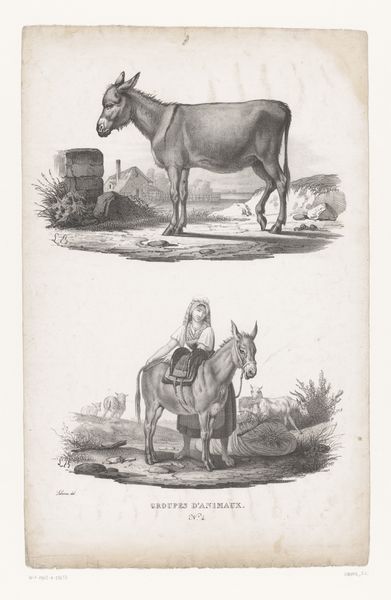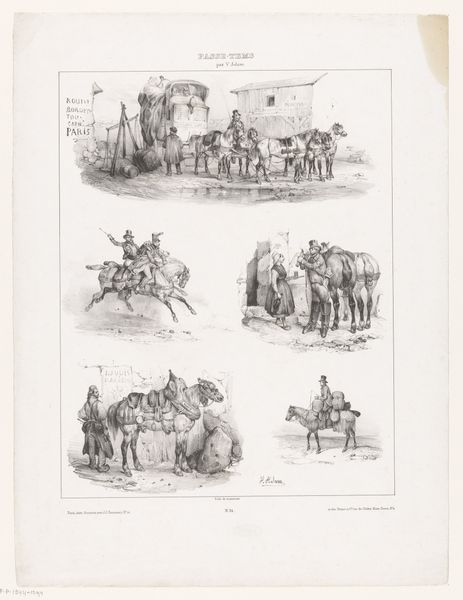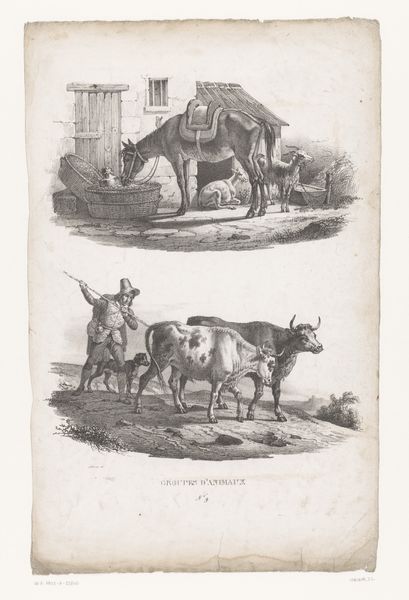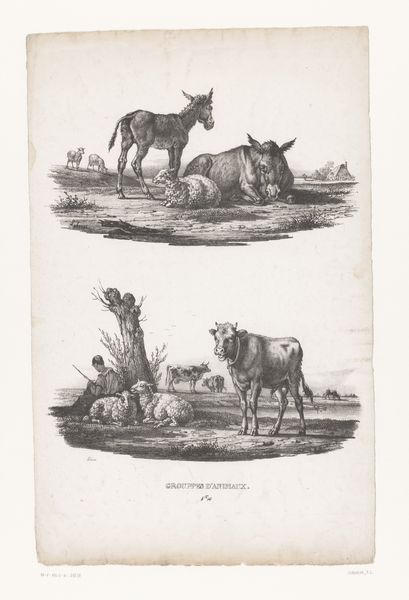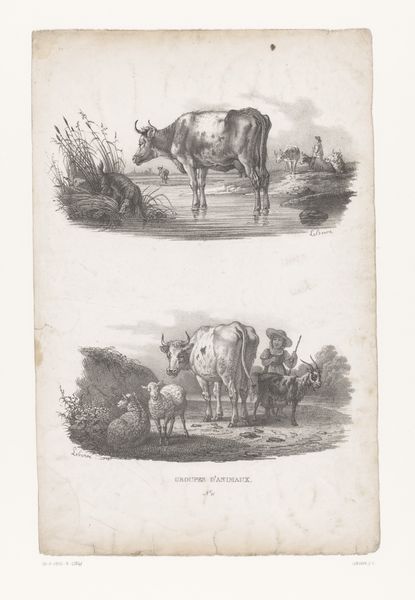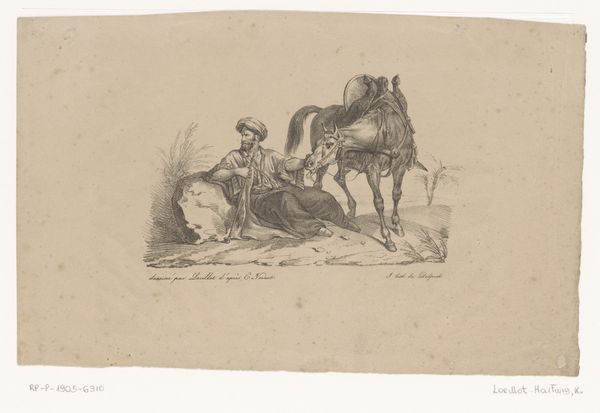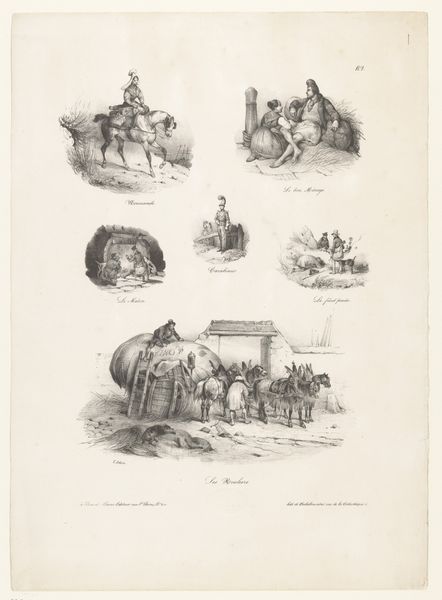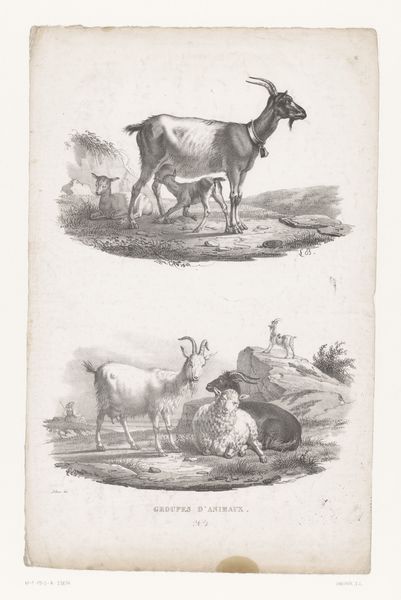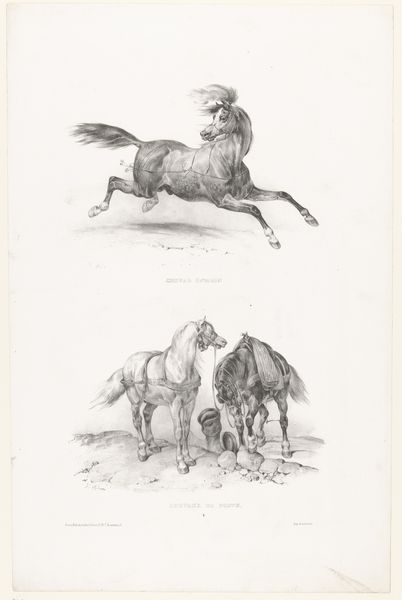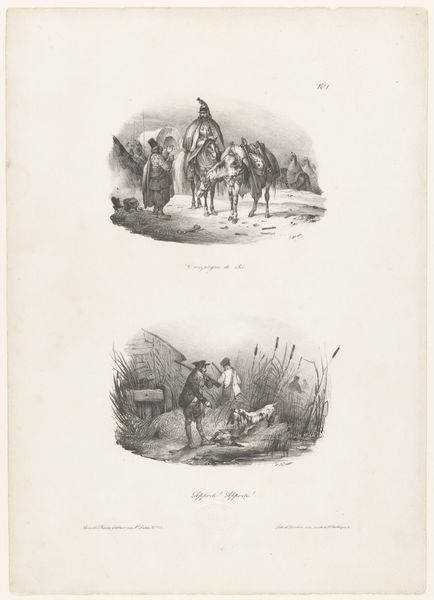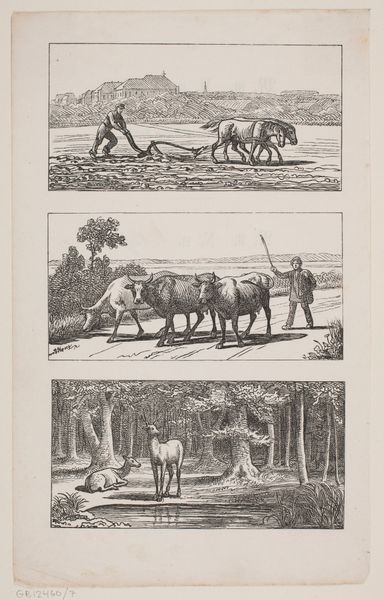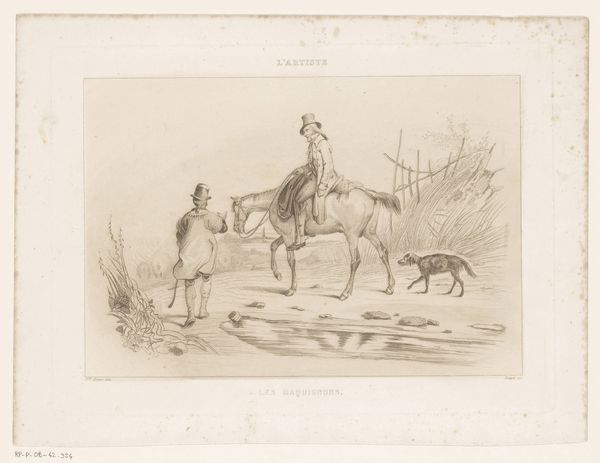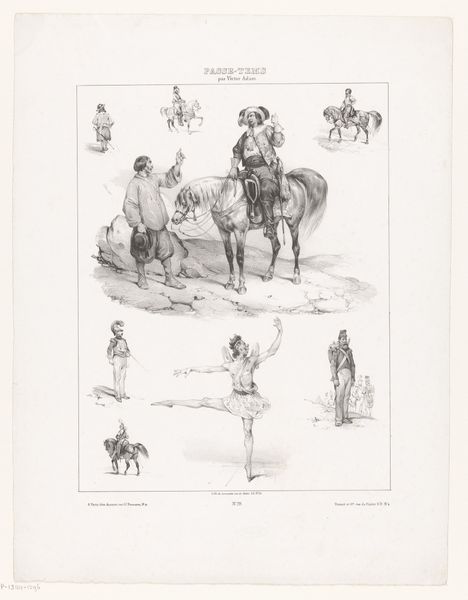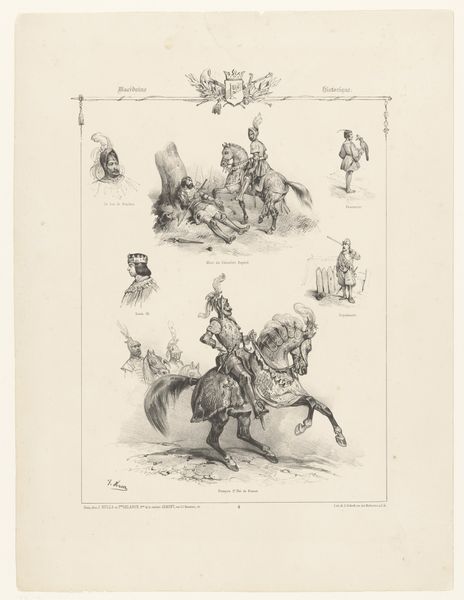
lithograph, print
#
animal
#
lithograph
# print
#
landscape
#
genre-painting
Dimensions: height 466 mm, width 299 mm
Copyright: Rijks Museum: Open Domain
Joseph Louis Leborne made this print, "Mule and animals at a watering place", sometime in the first half of the 19th century. It depicts scenes of working animals in rural settings. Leborne was part of a generation of French artists whose images offered a vision of harmonious rural life at a time when France was rapidly industrializing. The image creates meaning through a classical artistic trope: the picturesque landscape. This style of landscape painting elevated nature to an aesthetic ideal. In this print, the picturesque ideal serves a social function. It creates a sense of nostalgia for a traditional way of life based on small-scale agriculture and animal husbandry. At the time, the rise of industrial capitalism was causing massive social upheaval, including the loss of traditional rural livelihoods. Artists such as Leborne offered images that idealized and validated traditional ways of life, but whose work ultimately was acquired by the wealthy urban classes who benefited from those changes. By researching 19th-century French history, we can understand the social meanings embedded in such apparently simple images.
Comments
No comments
Be the first to comment and join the conversation on the ultimate creative platform.
